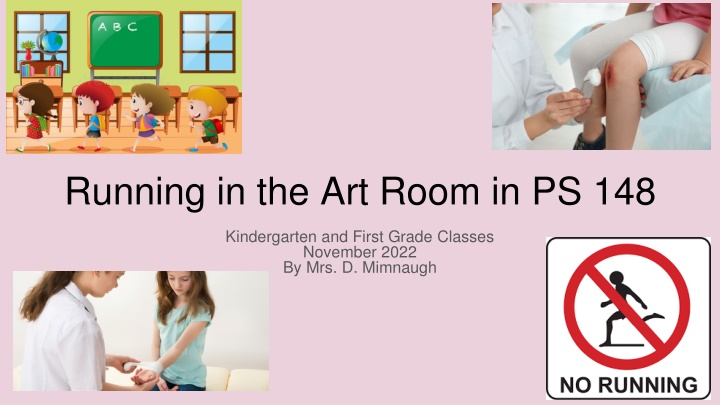
Effective Strategies for Managing Student Behavior in Art Room at PS 148
Discover the 6-step process of a Public Policy Analyst to address running behavior in kindergarten and first-grade classes at PS 148. Explore the identification of causes, evaluation of existing policies, and solutions to promote a safe and structured learning environment.
Download Presentation

Please find below an Image/Link to download the presentation.
The content on the website is provided AS IS for your information and personal use only. It may not be sold, licensed, or shared on other websites without obtaining consent from the author. If you encounter any issues during the download, it is possible that the publisher has removed the file from their server.
You are allowed to download the files provided on this website for personal or commercial use, subject to the condition that they are used lawfully. All files are the property of their respective owners.
The content on the website is provided AS IS for your information and personal use only. It may not be sold, licensed, or shared on other websites without obtaining consent from the author.
E N D
Presentation Transcript
Running in the Art Room in PS 148 Kindergarten and First Grade Classes November 2022 By Mrs. D. Mimnaugh
The 6 Steps of the Public Policy Analyst (PPA) 1. Define the Problem 2. Gather the Evidence 3. Identify the Causes 4. Evaluate an Existing Policy 5. Develop Solutions 6. Select the Best Solution (Feasibility vs. Effectiveness)
Step 1: Define the Problem The kindergarten and first grade students run around in the art room at PS 148Q, East Elmhurst, NY. Students are unaware of the dangers of running around the art room. Students are falling down. Students are hurting other students.
Step 2: Gather the Evidence Observing running/jumping upon arrival in the art room. Classroom teacher also observes running into the art classroom. Teacher complaints - similar situation in their classrooms School aide complaints also observing running in the hallways/lunchroom Parent complaints that their children got hurt In-House accident reports Nurse Log / Nurse slips
Step 3: Identify the Causes Students are young and energetic Students are unaware of the dangers Students do not remember the school/classroom rules Students do not care about the classroom rules Students are excited about being in the art classroom This is the first time students are in-person learning since the pandemic Students run around like this in their home Lack of structure / rules at home Lack of parent support Lack of parent understanding/support of school structure
Step 4: Evaluate the Existing Policy Speak with students about running in the classroom Whole group mini-lessons about classroom safety Positive reinforcement for good behavior - stickers, high-fives, positive feedback Talk to the homeroom teacher Use Class Dojo to contact parents Parent Engagement on Tuesday afternoons Make calls home Disadvantages: Too many messages on Class-Dojo Too many parent contacts can cause stress Get others involved: Call SBS team for support Guidance School Psychologist Assistant Principal
Step 5: Develop Solutions Rewards Reminders of the Rules Take away a privilege Reach out to Guidance Counselor / an assembly / class meeting Talk to Administration School Wide Behavior Intervention Plan Parent Coordinator / Parent Workshop Safety-in-house classroom trip with a safety group /EMS/Police Youth Officer Theater Group / Puppet Show about school safety
Step 6: Selecting the Best Public Policy Solution FEASIBILITY EFFECTIVENESS HIGH MEDIUM LOW HIGH Puppet Show (comes out of school budget) MEDIUM Rewards LOW Reminders of the Rules
Discussing the Matrix Reminders of the Rules - low effectiveness/high feasibility. It s something I already do and students continue to forget the classroom rules/it doesn t cost anything. Rewards - medium effectiveness/medium feasibility. Stickers, positive reinforcement, compliments do help some of the time. I spend a decent amount of money on stickers and the prize jar. Puppet Show - high effectiveness/low feasibility. For younger learners a puppet show or fun theater group presentation can help them to see safety issues and how to act in the classroom. It s low feasibility because it would cost the school a decent amount of money to bring a group into the classroom.
